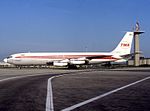Alsium
Coloniae (Roman)Etruscan sitesFormer populated places in ItalyRoman towns and cities in ItalyRoman villas in Italy

Alsium (modern: Palo) was an ancient city on the coast of Etruria, between Pyrgi and Fregenae, on the Via Aurelia, by which it is about 35 km from Rome near the modern Ladispoli. It was one of the oldest towns of Etruria, but does not appear in history until the Roman colonisation of 247 BC. It was never of great importance, except as a resort of wealthy Romans, many of whom (including Pompey and the Antonine emperors) had villas there.
Excerpt from the Wikipedia article Alsium (License: CC BY-SA 3.0, Authors, Images).Alsium
Via dell'Olmo,
Geographical coordinates (GPS) Address Nearby Places Show on map
Geographical coordinates (GPS)
| Latitude | Longitude |
|---|---|
| N 41.933333333333 ° | E 12.1 ° |
Address
Oasi Bosco di Palo Laziale
Via dell'Olmo
00055
Lazio, Italy
Open on Google Maps








